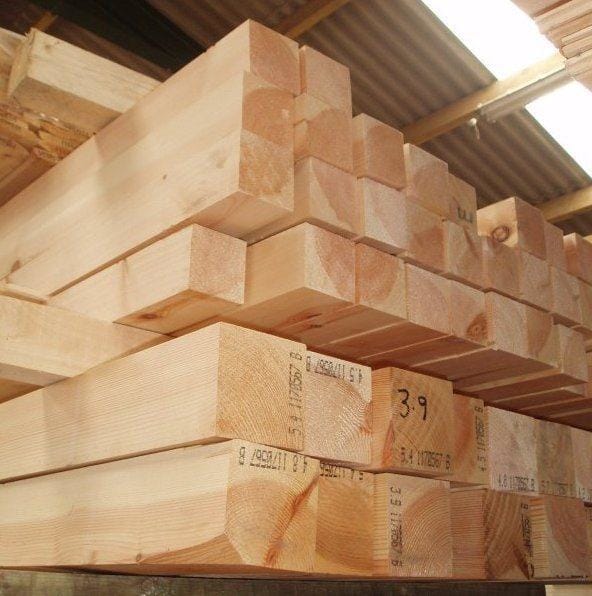When you are looking at timber for a project, there can seem to be a baffling range of different types available. From rough sawn to planed and all the variations, it can be hard to pick out what you need.
Here, we will look at PSE timber or Planed Square Edge timber., sometimes called Planed All Round (PAR). This is one of the most popular DIY options that is used for specific jobs. Let’s look at what it is and what it can be used for.
PSE timber is typically made from softwoods like pine or spruce, although it can also be sourced in hardwood varieties for added durability and strength.
Softwood PSE is often chosen for interior projects due to its lighter weight and cost-effectiveness, whereas hardwood PSE is preferred for more demanding uses where resilience and longevity are critical. This versatility allows PSE timber to be used in a wide range of applications, including interior joinery, shelving, cabinetry, and furniture making, as well as general framing tasks.
What’s the difference between rough and planed timber?
To start with, it is worth taking a moment to understand the difference between rough and planed timber.
Rough sawn is timber that has been cut down using a saw that’s it. The texture of the wood is rough and there’s plenty of splinter-potential if you were to run your hand down it. It is ideal for jobs where the wood won’t be seen. This type of 'finish' is most typically seen in fencing products like posts these days. Almost all Joist Timbers now are regularised which gives a semi smooth finish and rounded corners.
What are the alternatives to PSE?
If the timber is for structural use and strength rather than visual appearance important then regularised sawn is more cost effective solultion. Our most popular sizes are 4x2 6x2 and 8x2 timber.
What is PSE?
PSE stands for Planed Square Edge, which is a finished state of timber where the four sides are smooth and only the ends are rough where cut to length.
This makes for a smart and smooth finish that is perfect to use anywhere that the wood is visible.
Nearly any type of wood can be planed to create the smooth surface. However, in the UK, you often find that there are a few types of wood most commonly used to create PSE timber - these are both Softwoods - there is Redwood which is one of the most popular and Whitewood which is also quite common.
Planed timber is the finished product that has been 'thicknessed' or planed to remove that rough outer layer. It allows the grain of the wood to show through and is smooth when you run your hand along the surface.
Planed timber sizes
Another great thing about PSE timber is that there are plenty of options in terms of the size and length available.
Length of PSE wood can start as small as 900mm and go as long as 4500mm or even longer on some dimensions. Wood widths can range from just 8mm right through to 300mm. You can also find it available for cutting in greater sizes depending on the stock available.
What can you use PSE timber for?
One of the key benefits of PSE timber lies in its precision. Its square edges make it ideal for tight, close-fitting joints, which are essential for achieving a neat and professional finish. This precision also simplifies the process of joining timber pieces together, as the smooth, straight edges fit seamlessly without leaving visible gaps. PSE timber can also be treated for moisture and pest resistance, extending its usefulness to outdoor projects where weather exposure might be a concern.
Given its adaptability, easy workability, and attractive finish, PSE timber is highly favored by both professional builders and DIY enthusiasts. For instance, when building shelves, tables, or decorative paneling, PSE timber offers a polished appearance and durability that other types may lack. Furthermore, because it arrives planed and pre-smoothed, PSE timber can save time on sanding and other preparatory work, making it a convenient and efficient choice for many projects.
In summary, PSE timber is a high-quality, adaptable material that combines aesthetic appeal with functionality. Whether for intricate indoor joinery or robust outdoor framing, its smooth finish and precision edges make it suitable for a variety of projects. This timber's quality and versatility mean it is frequently used in applications that benefit from a clean, professional look, providing both reliability and a satisfying, polished result.




